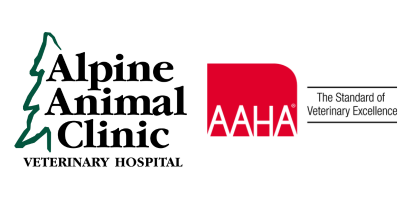Veterinary Topics
Pet Glaucoma
Glaucoma is a serious, painful, and potentially life-changing eye problem that can affect our pets.

Glaucoma
The medical definition of glaucoma is increased intraocular pressure, which means the fluid inside the eye has increased with no way to exit. (Imagine filling a balloon with water until it stretches and almost bursts.)
Initial recognition of glaucoma commonly requires emergency treatment to save vision. The patient would be hospitalized for pain control and be given diuretics (a medication that helps pull the extra fluid out of places it shouldn’t be, in this case, the eye). After getting the pressure inside the eye back into the normal range, it is essential to determine the cause. This can be discussed with your veterinarian, but the two main reasons for fluid to accumulate and pressure to rise are a blockage in the drainage tract or a drainage tract that is too small.

This dog suffers from glaucoma, or increased pressure within both eyes. Glaucoma can cause pain, redness, clouding of the cornea (the clear portion of the front of the eye), and vision loss. You may also see squinting, aversion to bright light, tears dripping from eyes, and wetness around the eyes. This is an emergency! Quick treatment is needed to try to save vision, as glaucoma can quickly cause permanent blindness.

Dr. Merry Michalski and Mandi, LVT, used tonometry to check this patient’s eye pressure comfortably and easily. A quick eye pressure check ensures your dog isn’t suffering from glaucoma, which can save vision when treated quickly.
Signs of glaucoma include enlarged eye(s), cloudy red eye(s), pain, increased tearing, loss of interest in eating, and lethargy. (Humans report that glaucoma feels like a horrible migraine). It is essential to recognize these symptoms because prolonged glaucoma or a sudden onset of very high pressure can cause damage to the vision centers in the eye, leading to complete vision loss. Luckily, there are treatments that we can do to try to prevent blindness and keep your pet out of pain.
